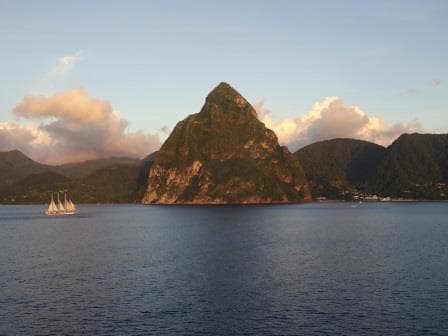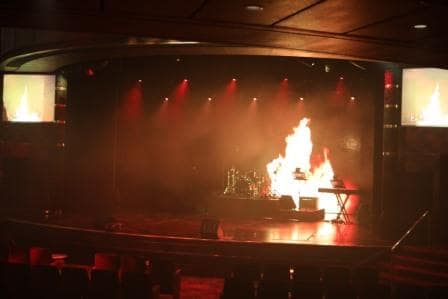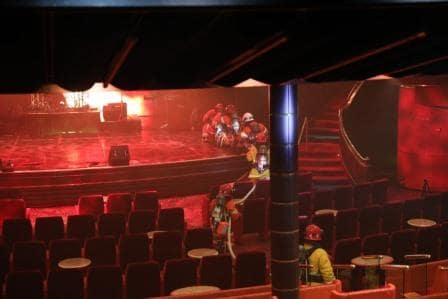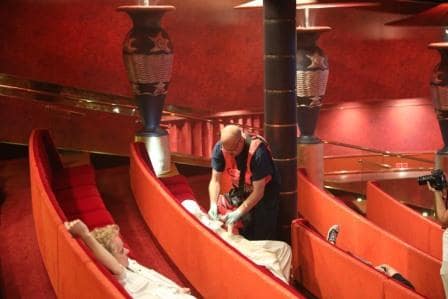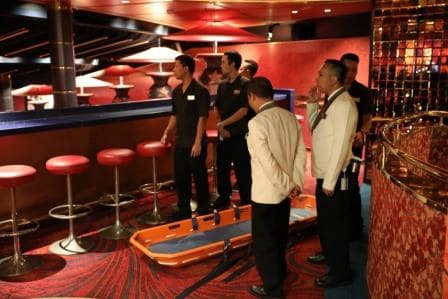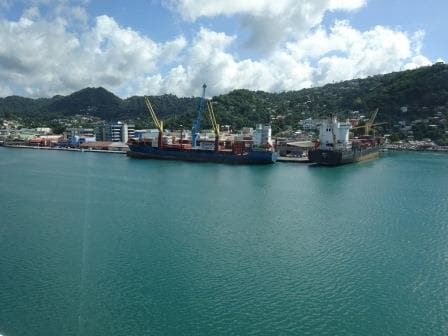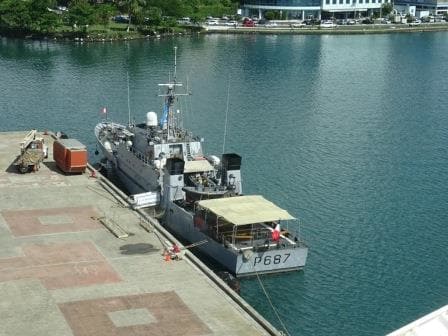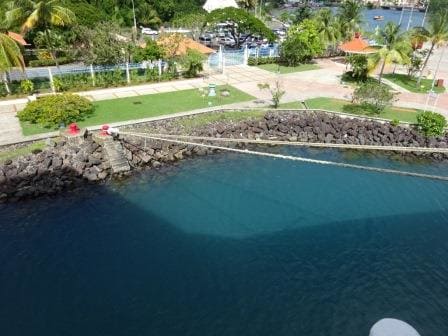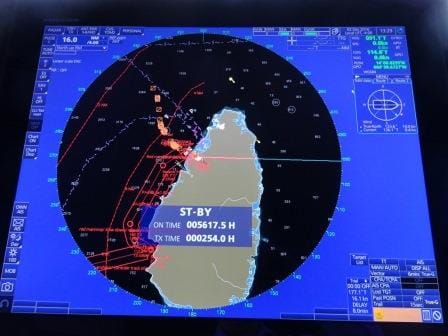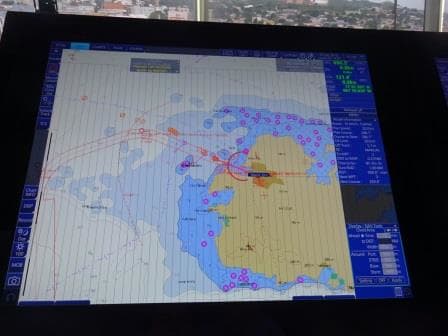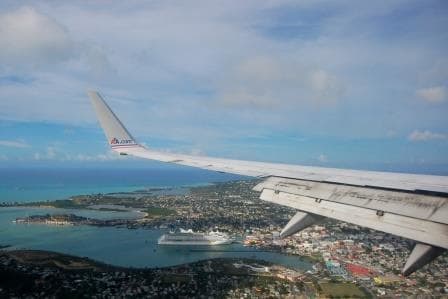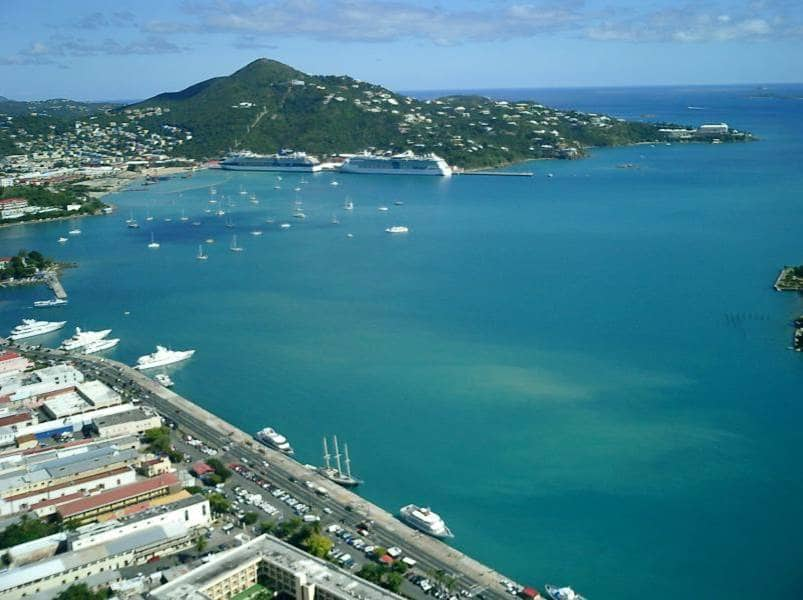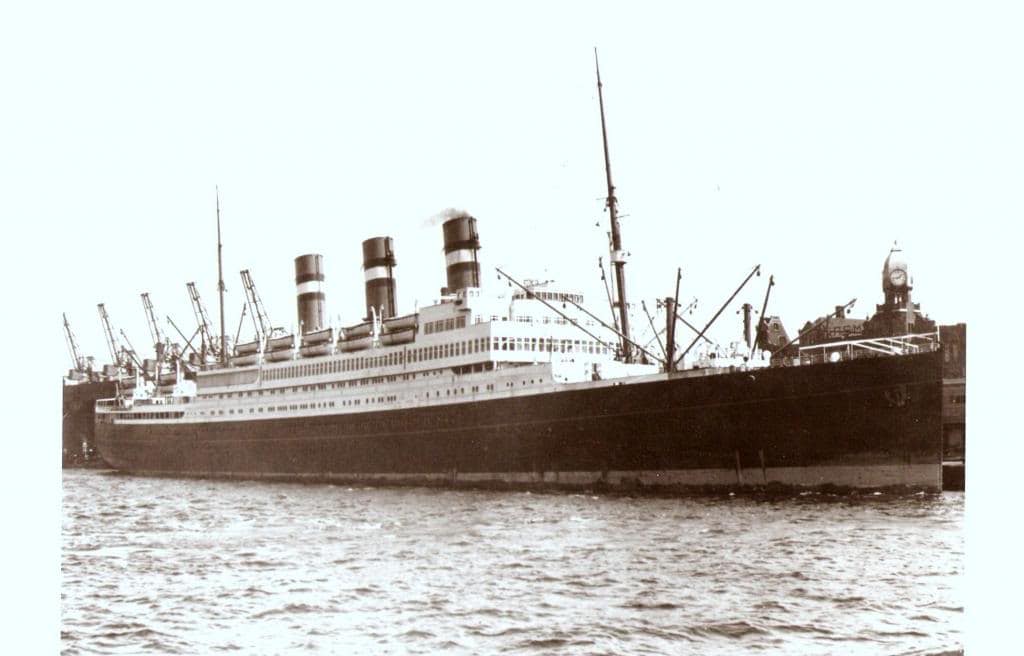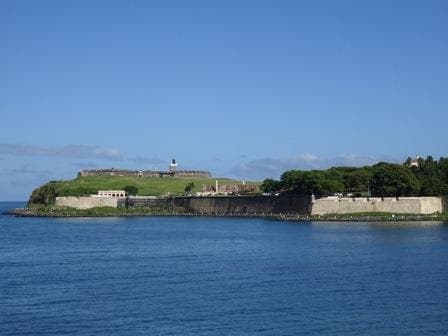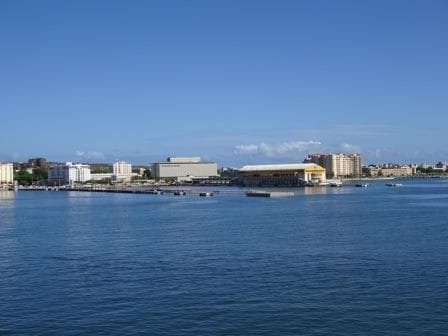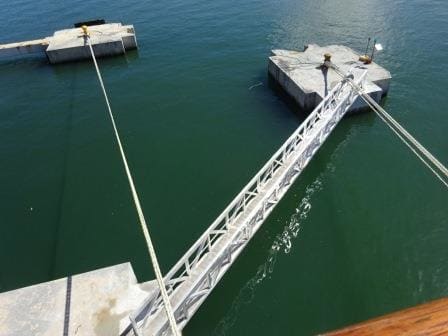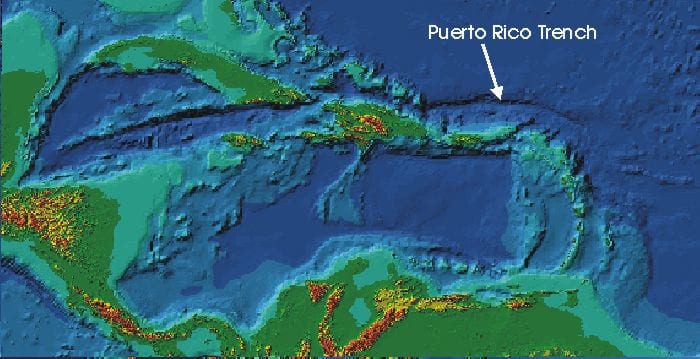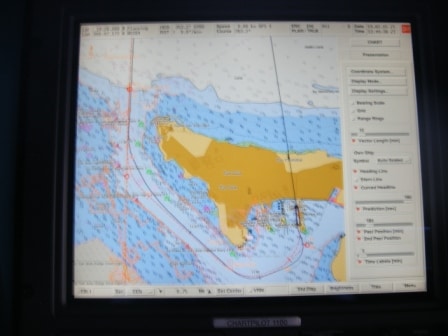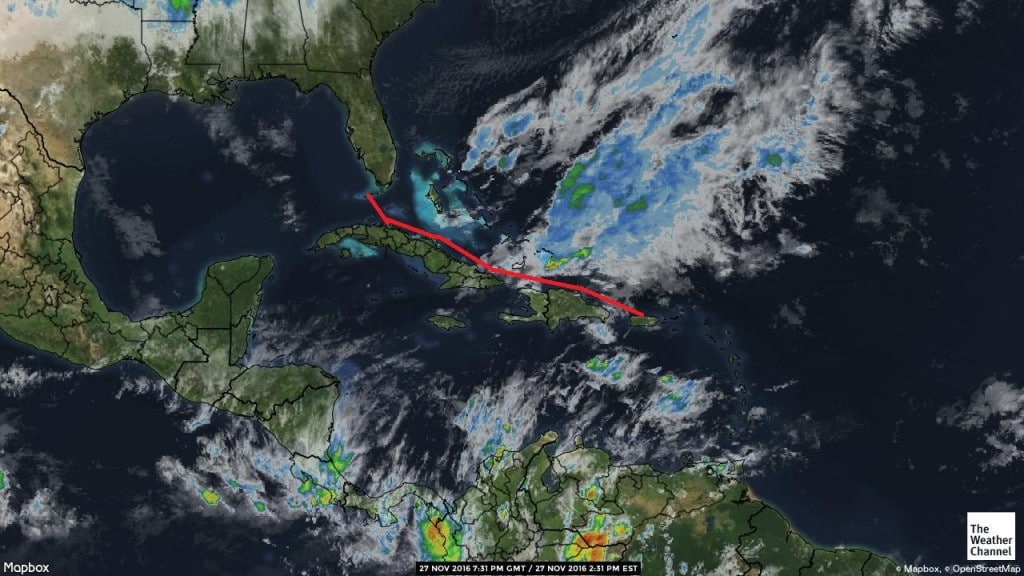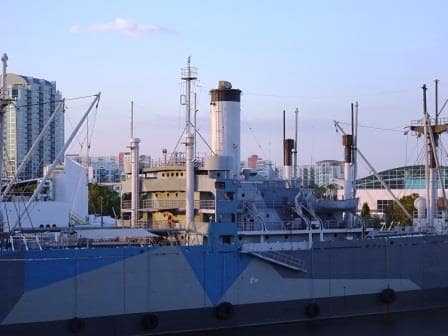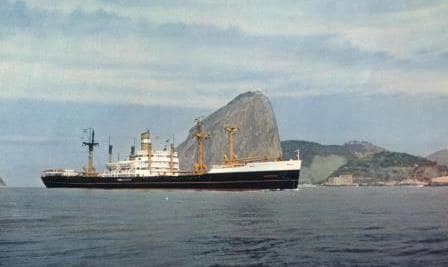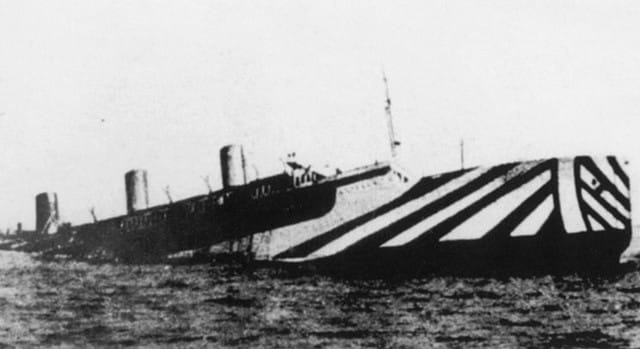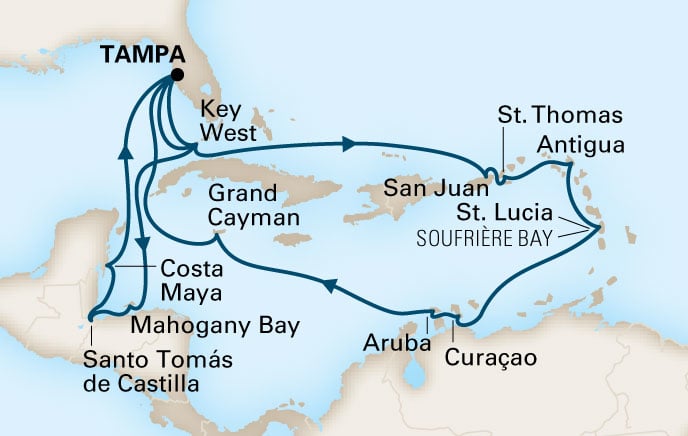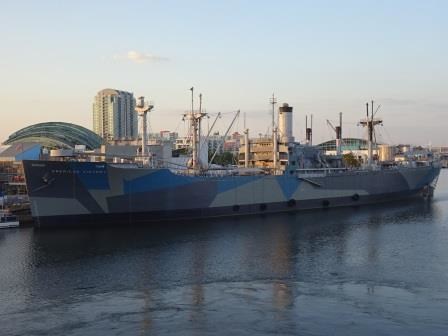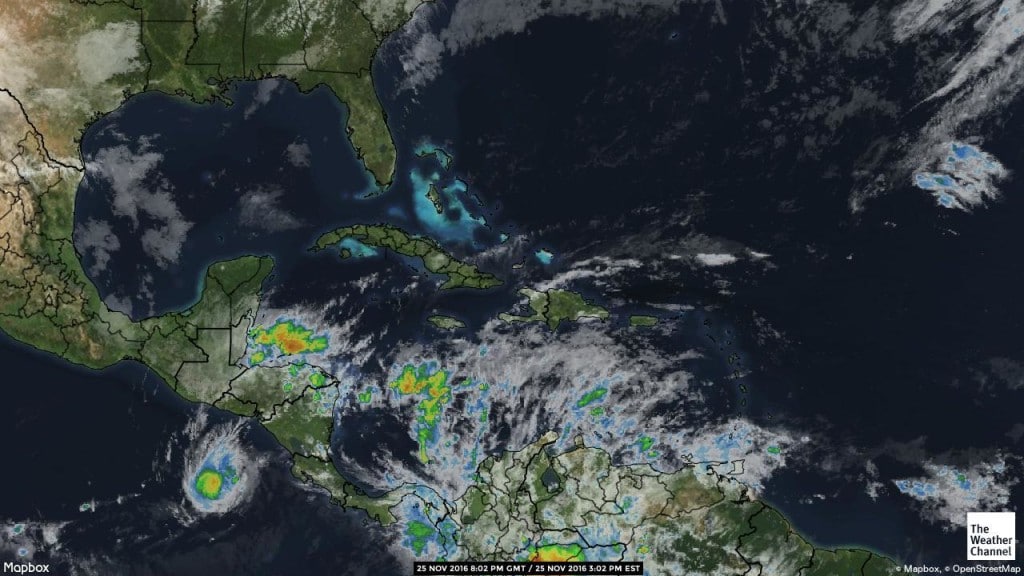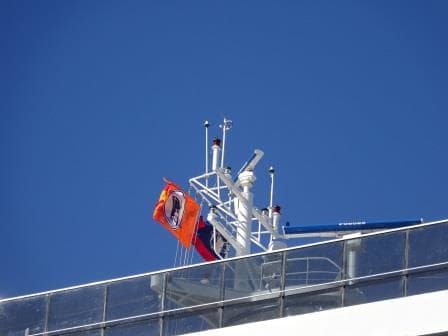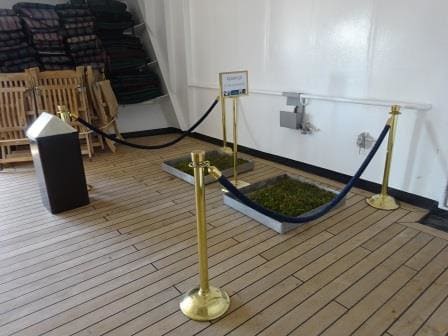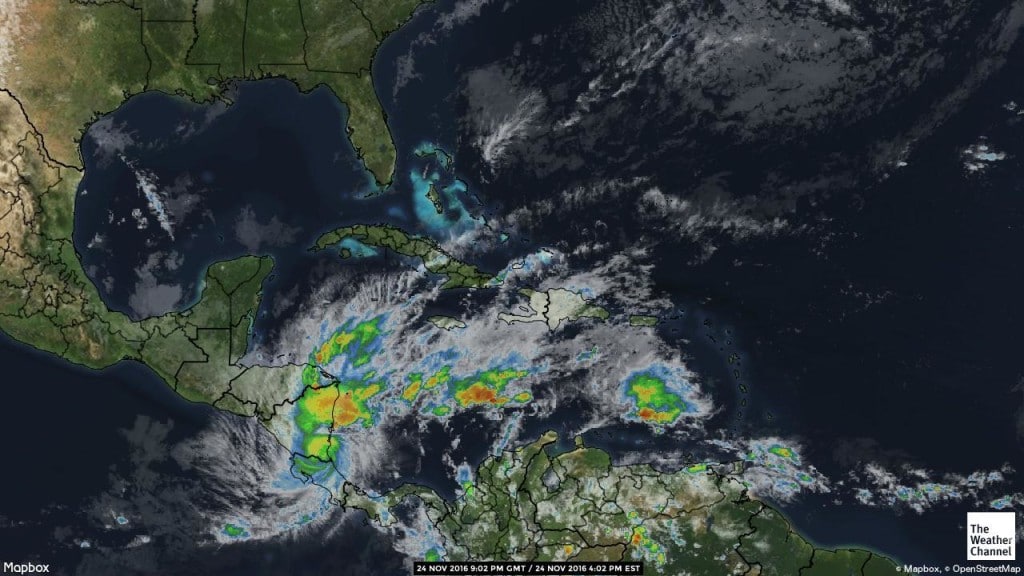Today we have a Sunday at sea and for most guests an excellent chance to recover from 4 warm ports in a row. Tomorrow we are in Willemstad, followed by Oranjestad, and then we have a sea day again. So the next stretch is not that busy. Yesterday after departure from Castries we sailed by the Pitons and it was one of the better scenic stops here that I have seen in a long time. The sun was almost setting and bathed the Pitons in a golden glow and while doing so a sailing cruiser came by right in front of it. Giving a good perspective of how high the Pitons are but also bringing a romantic touch to it all, remembering the old days of slow sailing clippers sailing around the world. Now it was a sailing ship used as a cruise yacht but it is still sailing and was still going slow.
The Oosterdam is going slow as well as the distance to Willemstad on Curacao is too long to make it one overnight. Thus we are trundling on with a sedate speed of 13 knots. The Trade winds are with us and have a velocity of 20 to 25 knots and the relative result is a gentle breeze over the decks of about 10 knots. Perfect weather to spend time on deck and thus all deck chairs were occupied with guests deeply immersed in books or “digesting all the information they had just absorbed from those books”.
Yesterday in Castries I organized one of my special – controlled mayhem- drills. Multiple Casualty retrieval and treatment for the Medical Department. We have official procedures in the case this happens. Our medical team cannot deal with 40 to 50 injured people (always a possibility in case of a fire or collision) and then they have to proceed to Triage Routines in a similar way as the Military does on the battle field. For a lot of crew this is something unusual and this means a lot of pre organization to get all the noses pointing the same way. For such a drill you need a lot of volunteers, who will play dead, wounded, or mentally impaired because of an incident. The fun part for them is to play “Drama Queen” to their hearts content and some a very good at it. Sometimes almost too good.
For this particular drill I set the show lounge on fire…….. sort of. With the modern techniques we can project fire on the screens with flames which look even more realistic than the real ones. After the Fire Teams have then secured the lounge (and the light technician lets the fire go out very slowly) the Medical Triage Team is sent in to assess/triage all casualties very quickly and then focus on those who still have a fair chance to survive.
Their challenge is, as they want to focus on those who can still be saved, that they are always hampered by those with small wounds and minor issues who still demand instant attention. For that and for transport, the rest of the crew comes into action. Make shift hospitals are being setup and the casualties are transported there and separated accordingly to their triage color and grading of urgency. While the lesser cases wait until medical is available their details are noted by the Administrative Staff so it is exactly known who is affected and how many.
I use the show lounge as it is together with the dining room the area with the largest concentration of guests on the ship and also because on a port day it is always empty in the morning. This time I managed to get 29 volunteers and the exercise took 45 minutes before medical could say; we have those who will survive stabilized and now we can go over to secondary treatment routines. For that option we normally take over the Greenhouse Spa where there are 10 treatments rooms which are perfect as a small hospital.
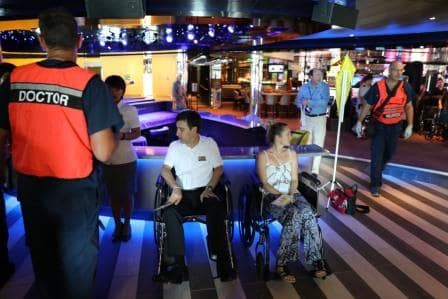
The yellow area for those who need urgent treatment but can wait until the critical cases have been stabilized.
Over a 100 crew is involved as there are extra stretchers teams, First Response teams but also support teams from the Bar Department who might be needed as extra security, providing drink and food. Apart from being useful, the crew really enjoys doing it as the Drama Queens provide a lot of entertainment and distraction and everybody is involved in doing something.
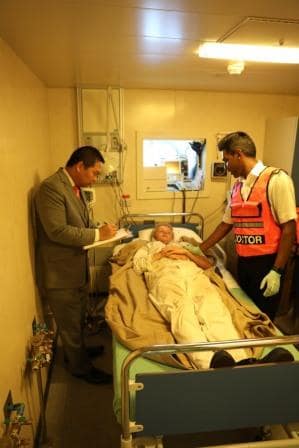
The critical cases end up under the direct supervision of the ships Sr.Doctor. Seen here dictating his assessment to a clerk or scribe supplied by the Front Office.
Tomorrow we are in Willemstad Curacao. At the moment we are scheduled for docking at the Mega Pier just outside the west side town of Willemstad. The weather will bring little change: It supposed to rain again, as it was supposed to do all week and it did not and it will be warm 85oF / 29oC and with the regular Trade Wind blowing.
